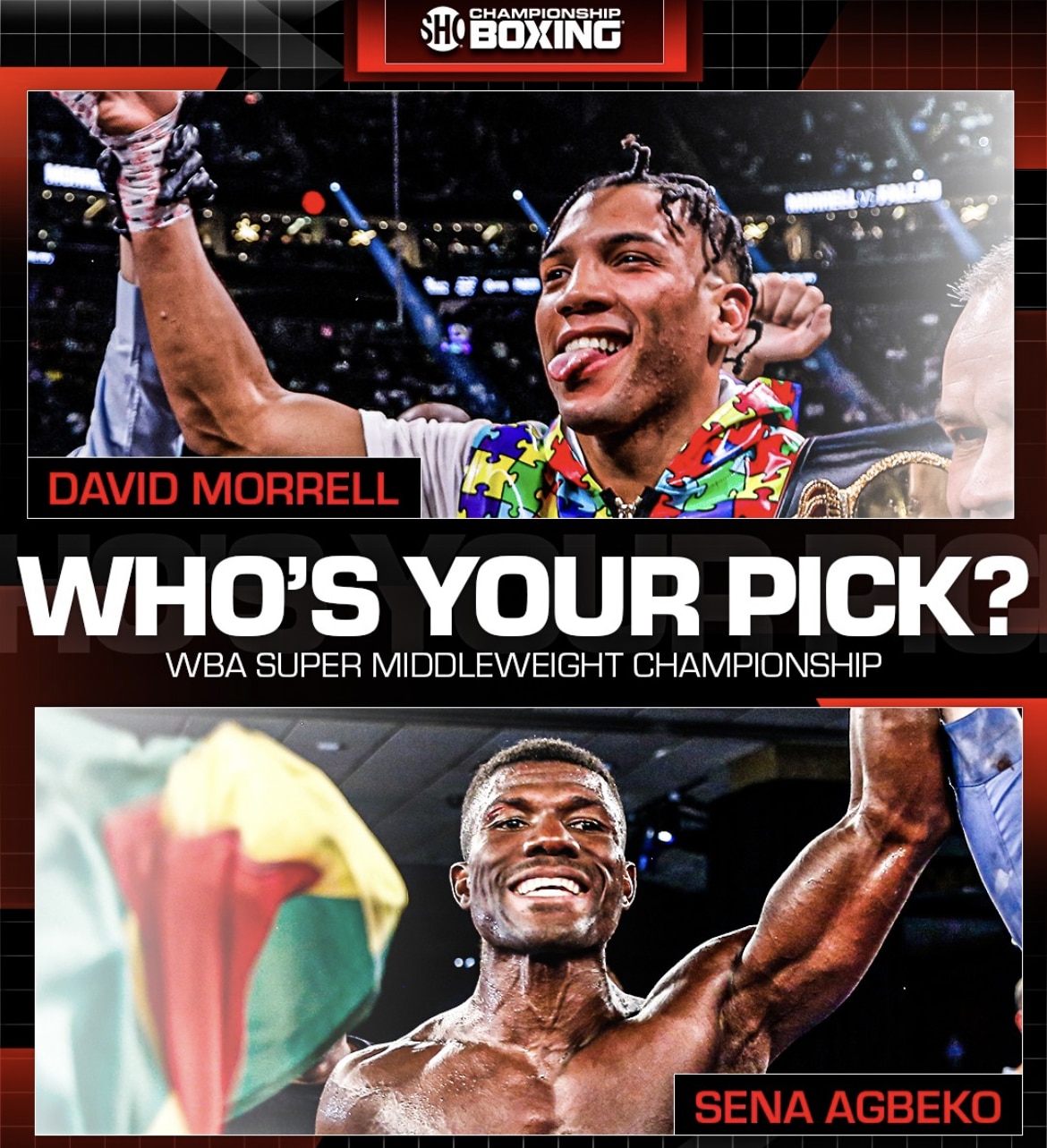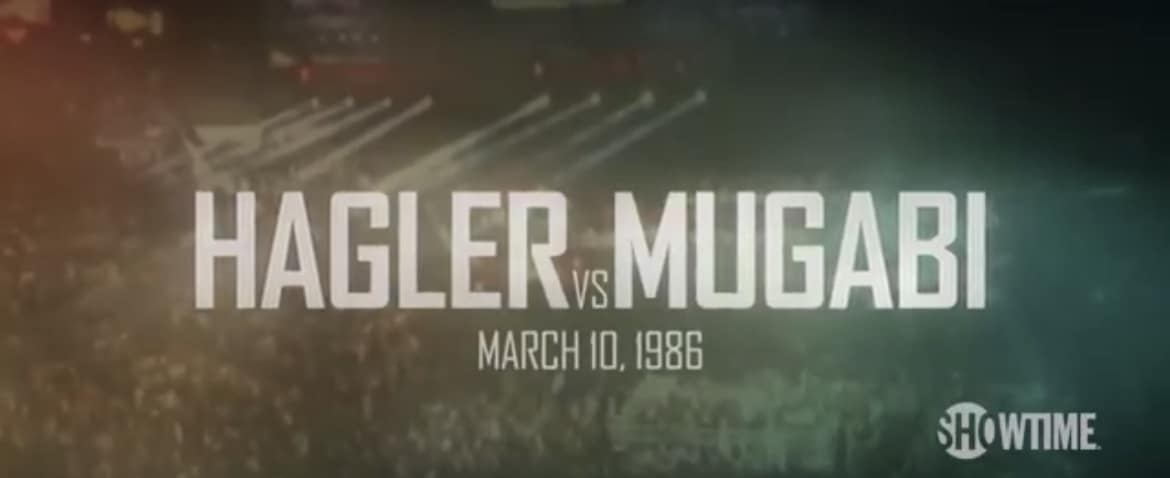Like a red-hot contender that rocketed to the championship in short order, Showtime became prominent in boxing very quickly.
The first boxing broadcast was a replay of the Marvelous Marvin Hagler-John “The Beast” Mugabi war on March 10, 1986.
By the end of the year, Showtime had announced itself as the network of upsets, televising four major shockers in six months – including Lloyd Honeyghan’s stoppage of Donald Curry, perhaps the second-biggest upset of the decade.
And so began a 37-year run that saw the network strive for, achieve and at times surpass the quality of its “big brother” HBO Boxing in televising the primes of some of the greatest fighters in boxing history – including Julio Cesar Chavez, Mike Tyson, Lennox Lewis, Felix Trinidad and Floyd Mayweather.
That run officially draws to an abrupt, bittersweet close Saturday, when Showtime Championship Boxing televises its final show: a tripleheader headlined by a WBA super middleweight title fight between David Morrell and Sena Agbeko.

It marks not only the end of Showtime’s association with the sport, but inches boxing closer to its death on linear television.
FOR THE LAST TIME, IT’S SHOWTIME!
HBO often got the credit for quality matchups and high production quality in the 1980s, 90s and 2000s.
But Showtime proved itself a worthy adversary very early on, even though its budget was much smaller.
It covered Evander Holyfield’s outstanding cruiserweight title reign and his foray into the heavyweight division, giving fight fans a glimpse of what was to come.
Everything from a blowout of Dwight Muhammad Qawi in an anticipated rematch, to a mini-war with Rickey Parkey, to an all out-war with Michael Dokes.
Its coverage of the “early” Holyfield culminated with his title-winning knockout of Buster Douglas.
When Don King switched allegiances from HBO to Showtime in the early 1990s, it suddenly gave “little brother” Showtime the biggest star in the sport, Tyson.
It started with Iron Mike’s firefights with Razor Ruddock and continued three years later when he returned to boxing from prison.
There was Tyson surviving Peter McNeeley’s “Cocoon of Horror” with a first-round blowout, then regaining the heavyweight title from Frank Bruno, then embarrassing the petrified Bruce Seldon.
Of course, Tyson and Holyfield finally crossed paths in 1996 and the result was Holyfield’s ”colossal upset” of Tyson, followed by the infamous, historic “Bite Fight” that shocked the world.
Who could forget Steve Albert’s call: “Holyfield is bitten by a DIRTY Mike Tyson!”
Afterward, a crazed Tyson and camp gave a memorable interview to roving reporter Jim Gray.
Before that though, and because of Tyson’s prison stint, King and Showtime were able to illuminate the brilliant career of “El Gran Campeon Mexicano,” as Showtime featured the prime of Chavez, including the showdown with Hector Camacho and the destruction of poor Greg Haugen in the largest outdoor boxing event ever in Mexico City’s Estadio Azteca – 132,247 strong.
Before the fight, Haugen claimed most of Chavez’s opponents were “Tijuana taxicab drivers.” He whistled a different tune afterwards.
“Well, they must’ve been pretty good taxicab drivers”
GREAT FIGHTS, GREAT NIGHTS
The dramatic scenes that unfolded before Showtime’s cameras are plentiful.
Who could forget watching Holyfield chase after a teetering Tyson?
Or Rafael Marquez and Israel Vazquez tearing into each other not once, not twice, but three times in a series that was every bit as good as that between Mexican countrymen Marco Antonio Barrera-Erik Morales?
What about the two fierce, controversial battles between Johnny Tapia and Paulie Ayala?
Anyone who saw Simon Brown punching at ghosts after fielding a massive left hook from Vincent Pettway won’t ever forget it.
Same for a dazed, battered Adrien Broner walking through a San Antonio corridor after taking a 12-round walloping from Marcos Maidana.
But when you’re talking Showtime Boxing, two fights stand out.
The first, on Feb. 25, 1995, ended in tragedy as Gerald McClellan suffered permanent brain damage after an all-out war with Nigel Benn in London. McClellan started fast as usual, knocking a shellshocked Benn through the ropes and very nearly winning by first-round knockout.
But Benn climbed back into the ring and waged a furious comeback, refusing to be denied. An unrelenting war unfolded, one that ultimately caused irreparable damage.
The image of McClellan blinking profusely after getting dropped to one knee in round 10 is one that is indelibly etched in the minds of those who saw it.
The sight of him being carried off on a stretcher is one that makes some of us wonder why we still watch this sport.
But why we watch this sport was answered on May 7, 2005, in Las Vegas.
That’s when Diego “Chico” Corrales and Jose Luis Castillo put on a display of fierce, beautiful boxing brutality. For it wasn’t just violence. It was skill, passion, athleticism, willpower, courage, ferocity, and art. Two finely skilled technicians plying their trade in the prime of their careers.
First one guy, then the other guy. It went like an elite form of Rock’Em Sock’Em Robots for nine rounds.
And had it ended there, most everyone would’ve voted it as Fight of the Year. But what happened in the 10th round qualified it as arguably the greatest boxing finish in history.
THE SHOWTIME SOUNDTRACK
But Showtime Boxing wouldn’t be what it is without those who described the action.
It started with Albert, who remains one of the more underrated blow-by-blow announcers ever.
His voice and timing were on par with any of his contemporaries.
Alongside him was the always colorful “Fight Doctor,” Ferdie Pacheco who, despite his obvious announcing flaws, added flavor and character to the broadcast. And Bobby Czyz was at a time the best color commentator in boxing.
The announcing team has maintained its high quality over the years, and Al Bernstein has been the constant.
Forty years after the world first saw Bernstein on ESPN Top Rank Boxing, he remains as prepared, as knowledgeable and as entertaining as he did in 1981.
His insight is only matched by his passion for the sport, and it’s his voice that fight fans perhaps most associate with Showtime Boxing.
Then there was “ShoBox: The New Generation,” a landmark program that introduced viewers to countless young fighters. But that’s a whole other column.
Steve Farhood, who started as a savant at “KO Magazine” about the time Bernstein was at Top Rank Boxing, is a boxing dean.
We can only hope that, like Bernstein, his vast boxing knowledge will be utilized elsewhere.
No eulogy would be complete without mentioning the late Jay Larkin, who helped found Showtime Boxing, and Stephen Espinoza, the current head of Showtime Sports.
Some found Espinoza to be a polarizing figure, but he steered Showtime during changing times and made it the gold standard for a decade.
Plus it’s not every day that a homie from El Paso’s West Side becomes one of the most powerful people in boxing.
There is talk of new ventures on new platforms.
Boxing is heading into a brand-new age. Change is constant, and not for the faint of heart.
But, for a time, know that Showtime Boxing was the best of the best.
From the fights to the commentary to the production to the atmosphere. You tuned in and knew you were in for a good – and probably great – night of pugilism.
So, we look forward to Saturday when, for the last time – in best Jimmy Lennon Jr. voice – it’s Showtime.
@MatthewAguilar5 on Twitter
